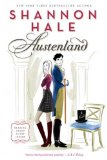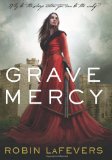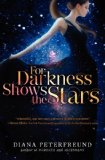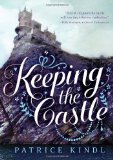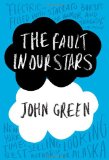Review of The Seer of Sevenwaters, by Juliet Marillier
by Juliet Marillier
A Roc Book (Penguin), 2010. 432 pages.
Starred Review
Juliet Marillier’s Sevenwaters books are Just. So. Good. I’d been spacing them out, because I know I can’t really get anything else done once I’ve started one. But after reading Shadowfell, I was craving another Sevenwaters book, so I finally read this one I’d purchased some time before. I don’t know how she makes each book so good.
There are some patterns to the books, but this one broke most of them, at least in small ways. Yes, we have a heroine of the Sevenwaters family. Yes, she slowly falls in love with a kind stranger. Yes, the romance is exquisitely drawn-out, so we can see the love slowly blossoming.
But this time, the setting is the island of Inis Eala, where Sibeal’s cousin Johnny trains fighting men. Sibeal has known since childhood that she is called to be a druid. That means she’ll never marry, and she’s never wanted anything else, has always known her path.
Then a ship wrecks on their island, driven there by an uncanny storm. Sibeal finds the kind stranger washed up on shore. He has no memory of who he is or what happened. Once she’s saved him, Sibeal feels compelled to nurse him back to health. But there are mysteries surrounding him and the other shipwreck survivors, particularly the tall and beautiful mute woman who’s said to be crazy with grief from her lost child.
Juliet Marillier’s language is magical. It pulls you into ancient Ireland so thoroughly you may, like me, start feeling cautious about even starting one of her books, knowing you won’t get much else done until you finish it. But the story will stay with you long after.
Here’s where Sibeal sees and hears the shipwreck, just offshore:
My dreams had not shown me this. I had been weary from my long journey. Last night I had slept soundly. Now I wished I had resisted sleep and made use of my scrying bowl. But then, if I had been granted a vision of the storm, the wreck, what could I have done to prevent it? A seer was not a god, only a hapless mortal with her eyes wider open than most. Too wide, sometimes. Even as I stood here beside my sister, there was a cacophony of voices in my mind, folk shouting, screaming, praying to the gods for salvation, crying out as lost children might. It happened sometimes, my seer’s gift spilling over into chaos as the thoughts and feelings of other folk rushed into my mind. It was one of the reasons my mentor, Ciaran, had sent me here to Inis Eala.
julietmarillier.com
penguin.com
Find this review on Sonderbooks at: www.sonderbooks.com/Fiction/seer_of_sevenwaters.html
Disclosure: I am an Amazon Affiliate, and will earn a small percentage if you order a book on Amazon after clicking through from my site.
Source: This review is based on my own personal copy, purchased via Amazon.com.
Disclaimer: I am a professional librarian, but I write the posts for my website and blogs entirely on my own time. The views expressed are solely my own, and in no way represent the official views of my employer or of any committee or group of which I am part.
Please use the comments if you’ve read the book and want to discuss spoilers!

